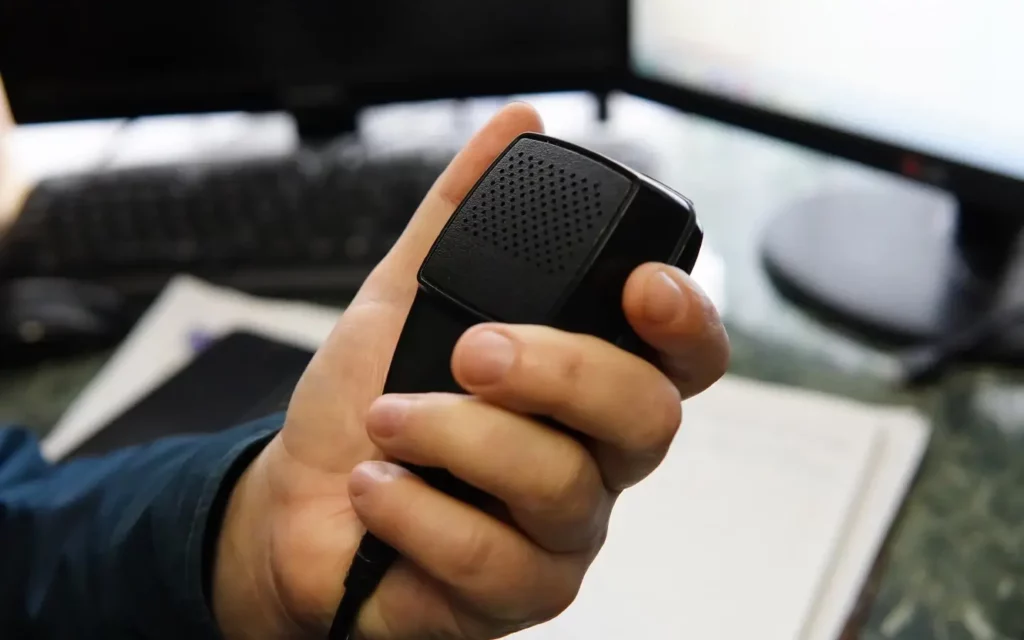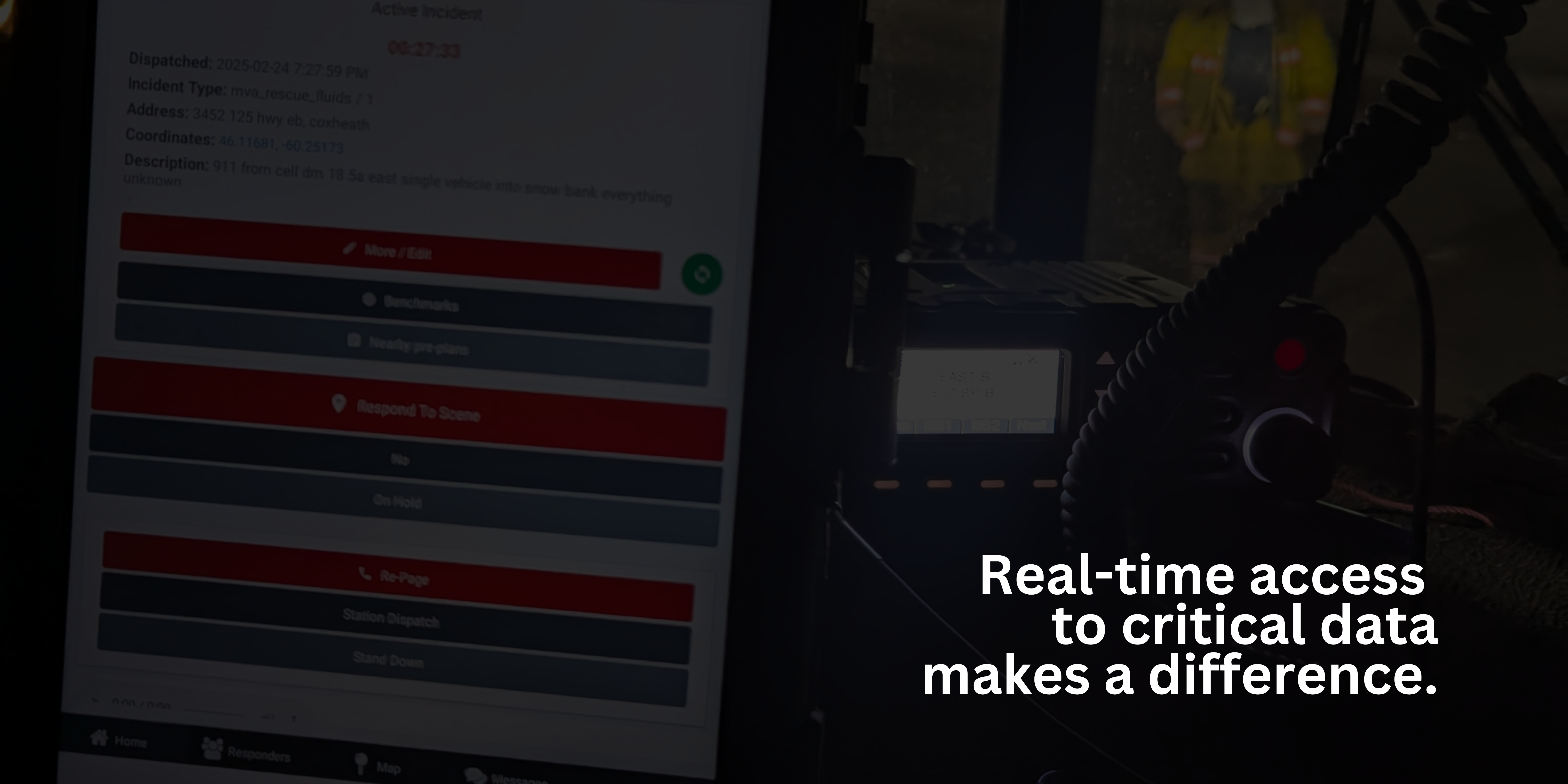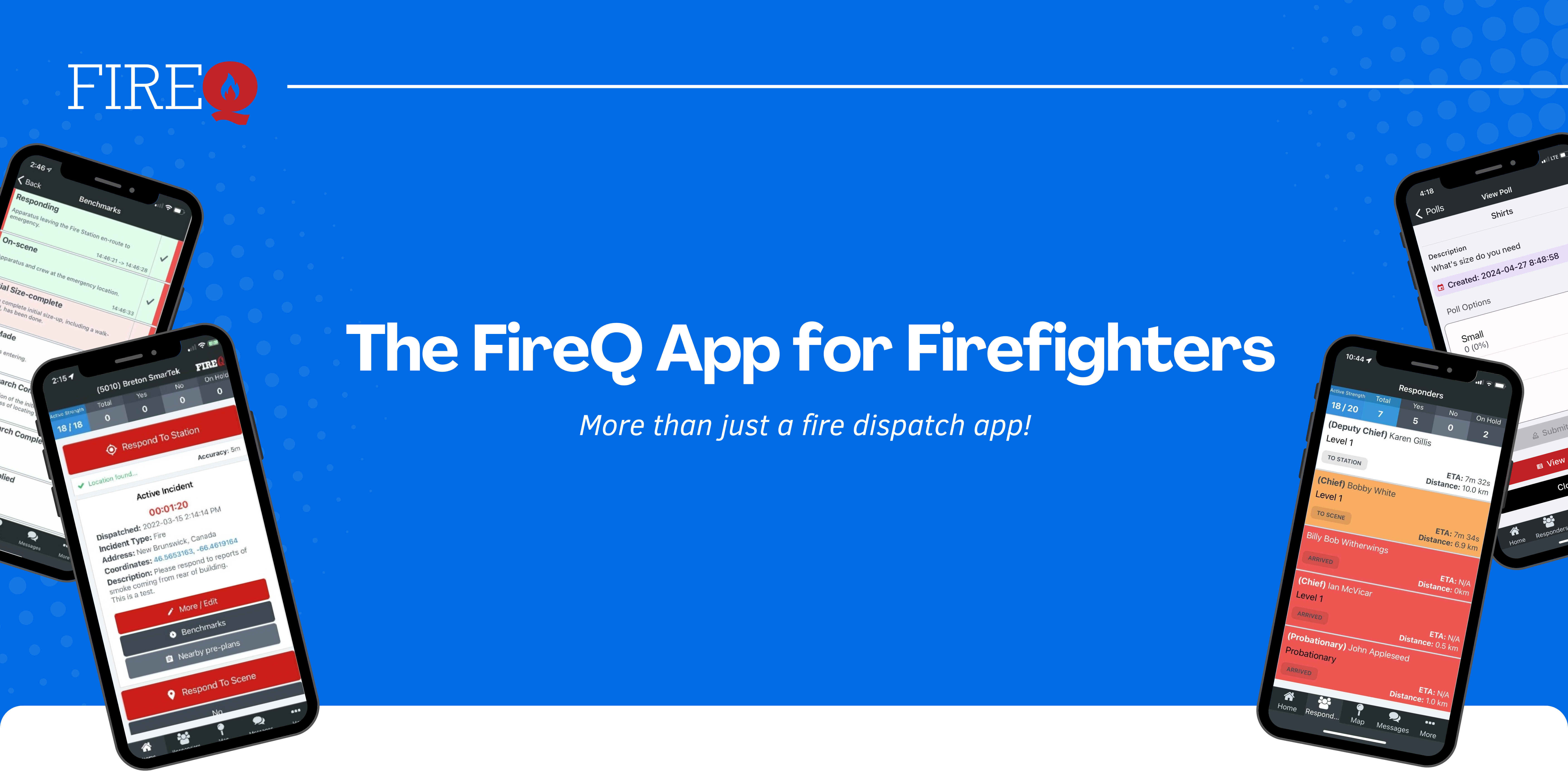Every firefighter knows the frustration of pager limitations and the challenges of getting emergency dispatch alerts, particularly when there is no redundancy in place to support the emergency alert process.
The dangerous work done by firefighters demands that redundancy be built into every procedure to maximize safety; yet the very task that alerts firefighters to an emergency often has no redundancy. Firefighters want and need redundancy to pager alerts. They want to receive emergency alerts via text messages, phone call, push notifications and email to ensure that the emergency alert is received by as many responders as possible. Pagers alerts, if missed, cannot be played again. Text, app, and email alerts are always available to firefighters.
Volunteer firefighters are on call 24 hours a day, 7 days a week, 365 days a year. Generally, they rely on VHF/UHF pagers to alert them to an emergency call. Yet, every firefighter knows that these pagers are limited in range; provide one-way communication only; and, are sometimes forgotten at home…despite the best intentions. Firefighters also know that being able to receive these alerts in more ways than by pager alone is critical to maximize their response.
When trying to add redundancy to the firefighter alerting system, it is important to recognize that the resources of fire departments are not always the same, not always equal. Some fire departments have CAD-dispatch support, while others do not; some departments have firefighters with smart phones and some who do not; and some fire departments have high-speed internet while others do not.
By providing multiple solutions designed to solve the pager redundancy issue, FireQ ensures that there is a solution for every for every fire department, regardless of their resources. With FireQ, firefighters enjoy all the ways to get those alerts.
Direct from CAD Supported Dispatch
FireQ supports email and API integration for the CAD systems used by dispatch. Firefighters still receive the primary alert via their pagers. Integration with FireQ ensures the CAD message created by operators is configured to send critical information to firefighters via text, voice, app, and email alerts. This information can include incident details and mapping information.
The FireQ Dispatch Module is available to any dispatch center not using a CAD system with the ability to send a secure email.
The module is offered at no charge to any dispatch center serving a fire department that uses FireQ. The dispatch module is easy to access and easy to use. As always, firefighters still receive their primary alert via pager and the FireQ dispatch module sends firefighters text, voice, app, and email alerts. Firefighters receive information that include incident and mapping information.
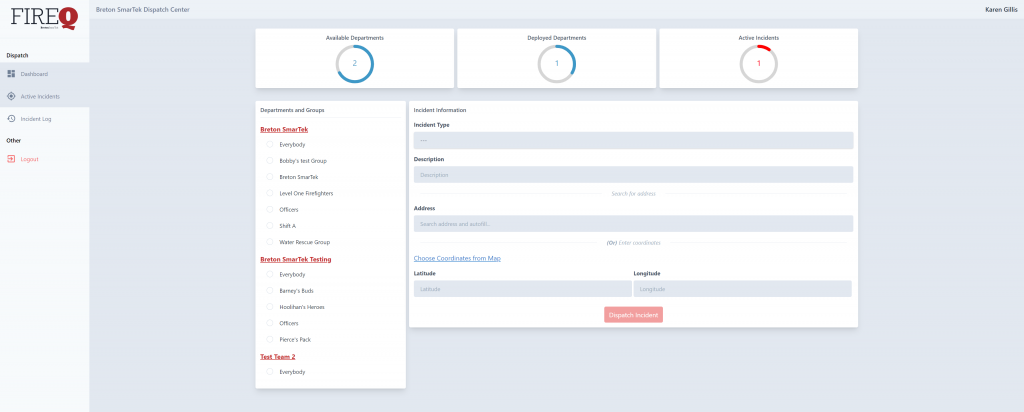
Direct from Non-CAD Supported Dispatch
The FireQ Dispatch Module is available to any dispatch center not using a CAD system with the ability to send a secure email.
The module is offered at no charge to any dispatch center serving a fire department that uses FireQ. The dispatch module is easy to access and easy to use. As always, firefighters still receive their primary alert via pager and the FireQ dispatch module sends firefighters text, voice, app, and email alerts. Firefighters receive information that include incident and mapping information.
Page Relay
For fire departments that do not have the support of a dispatch center, FireQ provides a page relay solution.
FireQ can include an application that allows firefighters to capture and record page information at the station level. The recorded information is processed and sent to firefighters through text, voice, app, and email alerts. Then, unlike some page relay options, firefighters can signal their intent to respond to an emergency, using the same app or the same device by which they received the information. Additionally, PageQ captures and processes raw audio differently than other page relay products, making it more efficient. This can often be beneficial for fire departments with slower internet speeds.
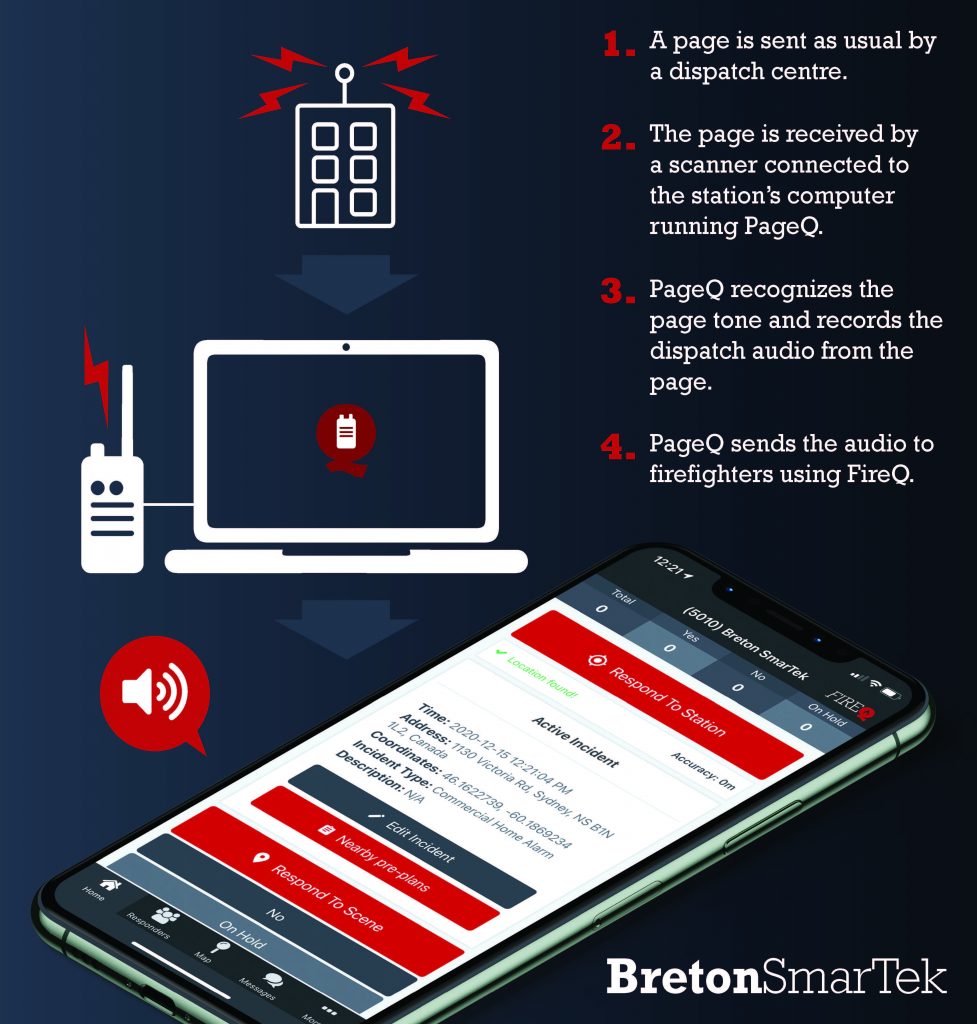
Department Self-Dispatch Options
Department self-dispatch options are the final tool in the FireQ dispatch tool box and are designed, specifically, to give fire departments a way to self-manage dispatch alerts.
If the pager fails, and the direct from dispatch alerts fail, and page relays fail, or if more information should be shared…firefighters can dispatch the department from the FireQ app and/or the FireQ software. Firefighters can dispatch the entire department or specific groups. When all else fails, the fire department has the ability to communicate emergency information and dispatch their firefighters.
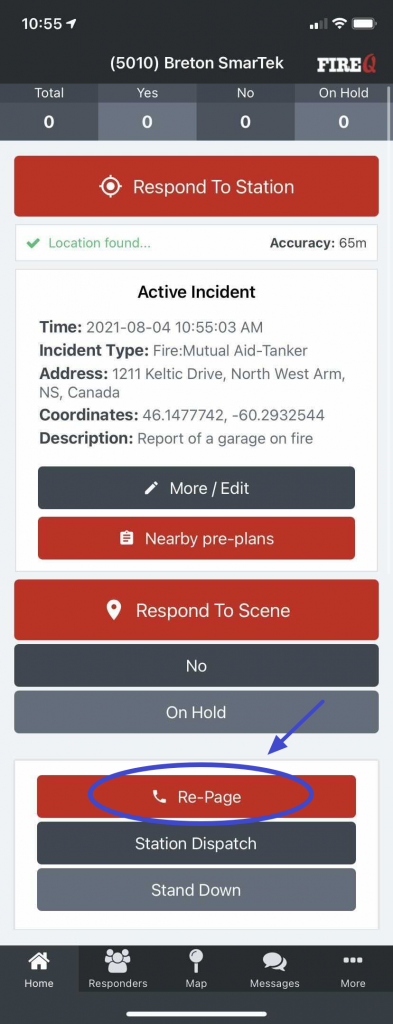
The FireQ re-page option allows firefighters to re-send an original page by tapping a single button.
Fire departments can also create an original dispatch. From the FireQ software, firefighters can enter address, incident type and incident description that can be sent to firefighters via text, phone, app notification and/or email. Address information sends mapping information to the smart phones of firefighters.
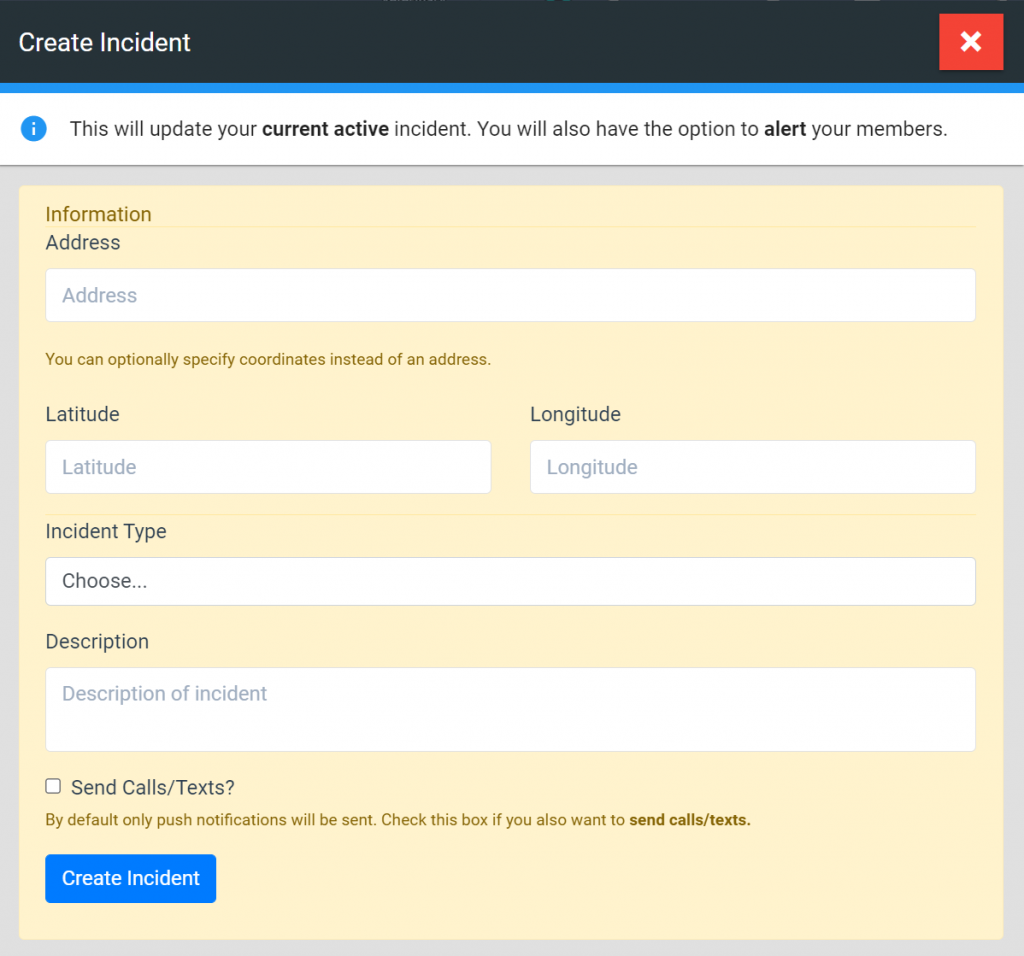
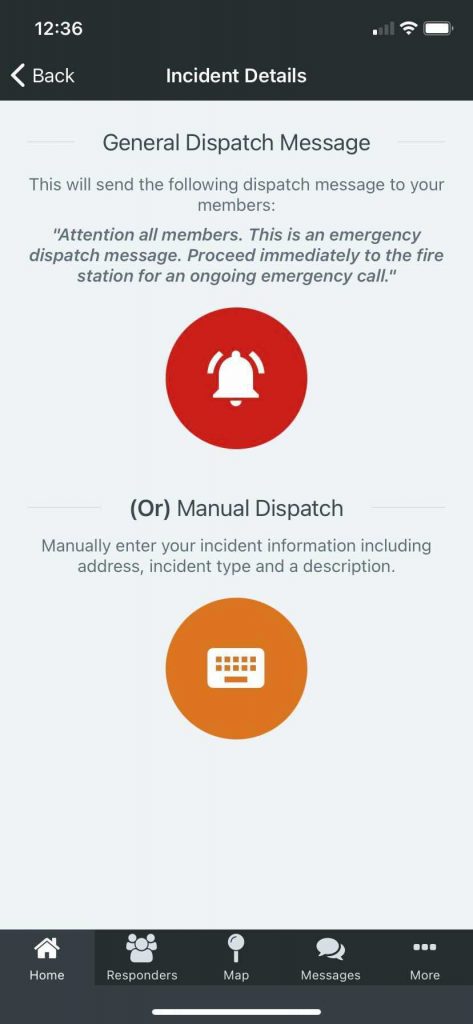
From the FireQ app, firefighters have two options:
- A one-button solution that sends an alert to firefighters advising them to report the fire station for an ongoing emergency.
- Alternatively, fire departments can also self-dispatch firefighters by entering address/coordinates, incident type, and incident description. Firefighters also have the choice of dispatching the entire department or specific groups within the department.
Department self-dispatch options also allow firefighters to update scene information at any time, regardless of how they are dispatched. It is important to note that firefighters using self-dispatch options must have the proper permissions assigned to them to access this feature. Permissions are assigned to firefighters from the FireQ software.
Pager limitations can be frustrating firefighters. The solution to their limitations should not be. FireQ gives firefighters redundancy for their pagers and redundancy for that redundancy.
As the saying goes, there is more than one way to skin a cat; or, in the case of firefighters, there is more than one way to get those emergency alerts.

